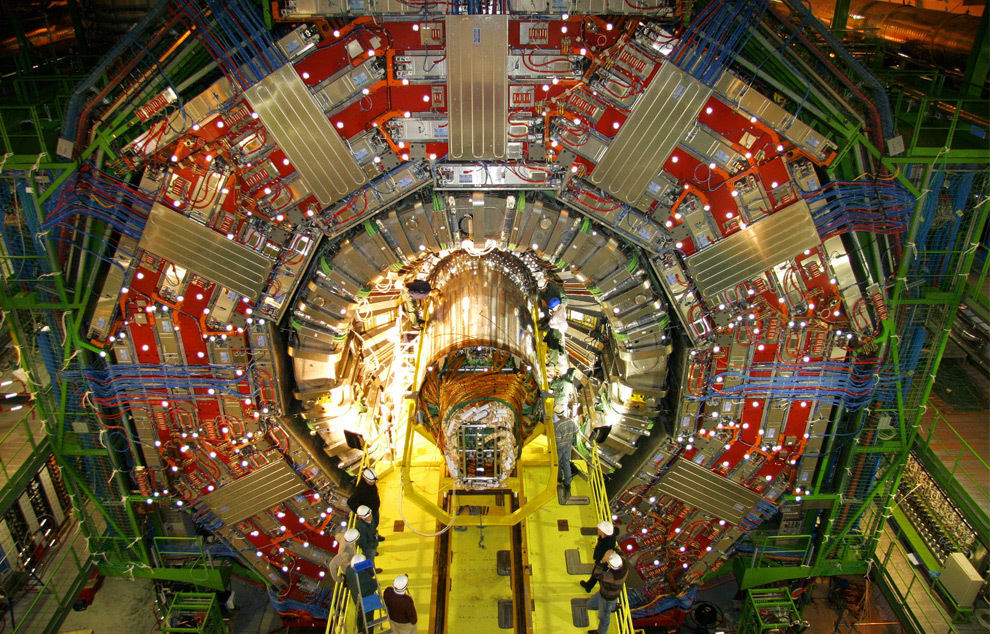"End of the world delayed": LHC broken
The Large Hadron Collider might be out of action for up to two months after a cooling failure caused a quench. Scientists are still fine tuning and testing everything before the collision experiments were due to start next month. It was out of action for a week already when a transformer failed, but the damage from a magnet quench is potentially more serious and takes longer to fix. The magnets used to guide the beams are superconducting electromagnets which are cooled by liquid helium to only a few degrees above absolute zero. A quench happens when part of the magnet gets a little too warm and suddenly starts behaving like an ordinary conductor instead of a superconductor. The enormous current it carries heats it up quickly and spreads to the rest of the magnet which very rapidly can heat up by several hundred degrees, boiling off the liquid helium in the process.
A quench isn't a completely unexpected event, and there are systems in place to try to prevent them (at least, to prevent them happening too often). The worst case is that the magnet has to be replaced and possibly repairs to the cooling systems to be made. They have about 40 spare magnets, so it isn't too big a deal, but it does take a lot of time because it means the affected sectors have to be warmed up, people go in to do the work and then it all has to be cooled down again.
The LHC is an amazing piece of machinery, with lots of interrelated systems, including many safety systems to protect the LHC from itself.
 The Big Picture has some more amazing pictures of the LHC.
The Big Picture has some more amazing pictures of the LHC.